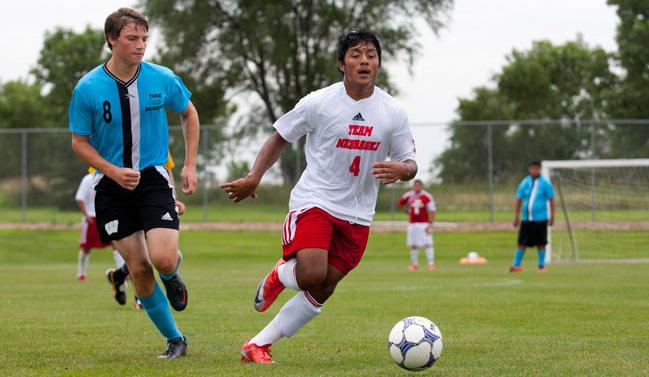

WELCOME
Special Olympics Project UNIFY
Project UNIFY® is an education and sports based program started by Special Olympics in 2008 designed to build an inclusive environment among youth with and without intellectual disabilities, as well as empower them to become youth leaders and speak up for change in their community.
Project UNIFY works in three ways:
1) Inclusive Sports – provide students with and without intellectual disabilities opportunities to participate in sports activities alongside one another;
2) Youth Leadership & Advocacy – provide students with and without intellectual disabilities opportunities to take on leadership roles to promote Project UNIFY activities in the school and in the community; and
3) Whole-School Engagement – provide opportunities for all students in the school to participate in Project UNIFY through sustained school-wide activities.
For more information about Project UNIFY, visit specialolympics.org/putoolkit. In the Project UNIFY toolkit, there are many great resources on how to get Project UNIFY into your school, or better an existing program.
About the 2014 Special Olympics USA Games
The 2014 Special Olympics USA Games will be hosted by New Jersey June 14-21, 2014. Nearly 3,500 athletes will compete in 16 Olympic-style team and individual sports, with the support of 1,000 coaches, 10,000 volunteers and 50,000 family, friends and spectators. The 2014 USA Games will celebrate the Special Olympics movement, promote the ideals of acceptance and inclusion through sport and showcase athletes from throughout the U.S. and the abilities of people with intellectual disabilities. The Special Olympics USA Games will also highlight Special Olympics’ work in sport, education, health and communities. Learn more about the 2014 Special Olympics USA Games at www.2014specialolympics. org and follow the Games on Facebook at Facebook.com/SpecialOlympicsUSAGames and Twitter @2014USAGames.
Other relevant Special Olympics activities
Special Olympics Unified Sports: An inclusive sports program that combines an approximately equal number of Special Olympics athletes (individuals with intellectual disabilities) and partners (individuals without intellectual disabilities) on sports teams for training and competition.
Spread the Word to End the Word: A campaign that asks people to pledge to stop saying the R-word (retard or retarded) as a starting point towards creating more accepting attitudes and communities for all people.
Youth Activation Committee (YAC): A group of young people who work together to promote school communities where all young people are agents of change.
INTRODUCTION
The School Enrichment Guide was inspired by the 2014 Special Olympics USA Games and designed to advance students’ civic knowledge and skill development, while motivating youth to become advocates for others. The content is based on the ability, dedication, and inspiration found in the millions of Special Olympics athletes around the world. Though it all starts with sports, this guide is an addition to existing resources within Special Olympics Project UNIFY®, Special Olympics’ social inclusion strategy that activates young people to enhance school climate and develop school communities where all young people are agents of change.
There are four videos in the School Enrichment video series. They are designed to complement the existing monthly Classroom Activity Newsletters specifically during the months of February - May. Throughout the guide, you will see topics that connect back to the relating monthly newsletter or other Project UNIFY resources, such as:
l Get Into It Lessons & Games
l Get Into It Active
l Movies that Move
Each video has a unique call to action:
l Video 1: Be a Fan
l Video 2: Be a Friend
l Video 3: Be a Teammate
l Video 4: Be the One
Throughout the activity students are asked to reflect, react, respond and get involved, and are encouraged to take their thinking and actions to a higher level.
Reflect.
Each video begins with a brief introduction to the upcoming games and then presents a question for the students to consider as they watch a 3-4 minute clip.
React.
At the end of each clip the word, “React.” will appear on the screen. Teachers will be asked to pause the video at this point and work with students to navigate specific questions in the guide. Once students have discussed, teachers can continue the video and students can watch as Project UNIFY youth leaders offer their own reactions.
Respond.
At the end of the video, a final response question is offered. This question is designed as a call to action, an opportunity to encourage students to think about the “So what?” or “What now?”. There are also additional questions and activity ideas in the guide to help with brainstorming and encouraging students to take action.
Get Involved.
Following the discussions, these suggested activities identify ways for students to get involved with Special Olympics in their local community or be inspired by the values and ideals of Special Olympics Project UNIFY.
GRADES 3-5

Background for Students
Everyone is different. Special Olympics is for people who have different abilities they learn new skills slowly and have what is called an intellectual disability. There are people with intellectual disabilities all around the world. Special Olympics works to reach out to those people and invites them to play sports to build new skills and demonstrate their abilities.
ATHLETES SERVED
4,205,630
3,122,261 TRAINING & COMPETITION
1,083,369 TRAINING
This summer, the 2014 Special Olympics USA Games will be held in New Jersey where 3,500 athletes will showcase their unique athletic abilities while competing in 16 different sports. They will be joined by 1,000 coaches, 10,000 volunteers and 50,000 spectators and families!
The videos in this collection are designed to help school communities learn more about the Games while thinking about those with different abilities and how we can be welcoming and kind to everyone. The videos encourage students and classrooms to make a connection with Special Olympics athletes in their area and support triumphs on and off the field as they complete locally and nationally.
Video 1: Be a Fan

Many people know what it means to be a fan cheering on a favorite sports team or even having a favorite movie star or a favorite band. We are fans of people who have different talents sometimes talents that are similar to our own, and sometimes talents that are very different. We can even be a fan of people we know encouraging their talents and supporting them as they try to do their best.
Reflect. What does it mean to be a fan?
Start the video and ask students to think about the thousands of fans who cheer on athletes who are doing their personal best in different sports.
React. (Pause the video here).
1. Have students finish the sentence “I am a fan of…” (e.g., a sport, specific person, team) Discuss why people are fans of so many different things or people.
2. Think about the video. How did the man help the athlete during the race? (Did he say something? Do something?)
3. When do you think people need encouragement the most?
Respond. What can you do to be a fan?
1. Think about a time when someone encouraged you to do your personal best. What did they do? How did you feel? Did this person help you succeed?
2. Think about the people you see every day. Write down the name of someone who is always trying their best. Come up with a plan for how you can better support that person.
3. Why is it important to support people with different abilities? Encourage your students to attend a local sports game or big event where you can cheer on people with different abilities.
Get Involved!
Contact your local Special Olympics chapter to find events and competitions near you where you can support as a fan.
For more activities about diversity:
l Visit the February newsletter.
l Review Lesson 1 for grades 3-5: “A World of Difference” in the Get Into It lessons.
l Watch the “Different Abilities” section of Movies that Move.
l Try out the “Support Card Creator” on the Get Into It website.
Video 2: Be a Friend
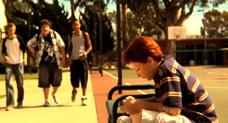
In many schools, bullying is a big problem. Students who seem different are often teased and left out of activities. It takes courage not to be a part of the bullying; it takes even greater courage to stand up to the bullying and be a friend when someone needs one.
Reflect. What does it mean to be a friend?
Start the video and ask students to think about how being accepted and included (or excluded) can impact how someone feels or what they do.
React. (Pause the video here).
1. Consider the two parts of the video. Which one do you think would happen at your school?
2. Why do you think the bullies made fun of Red? Why didn’t Red respond?
3. What prevents people from standing up to bullies?
Resume the video for reactions from other youth leaders.
Respond. What can you do to be a friend?
1. The basketball player took one specific action to be a friend to Red. Why was that important? What else could he have done?
2. Has anyone ever been a friend to you at a difficult time? Ask students to write a letter thanking that person for their actions. (Students can decide to either send this letter or just use it as an opportunity to prepare what they would say.)
3. Consider the bullying that you’ve seen within your school or community. What would happen if you decided not to look the other way? How would that change your school?
Get Involved!
Have lunch with someone who needs a friend this week.
For more activities about the power of words:
l Visit the March newsletter.
l Review Lesson 2 for grades 3-5 “What is a winner?” in Get Into It Active.
l Watch the “Power of Words” section of Movies that Move.
l Test your skills in the “We’re More Alike Than We Are Different” game on the Get Into It website.
Video 3: Be a Teammate

Special Olympics Unified Sports joins people with and without intellectual disabilities on the same team. Teammates train and compete together, building friendships and new understandings.
Reflect. What does it mean to be a teammate?
Start the video and ask students to think about experiences they’ve had being on a team.
React. (Pause the video here).
1. Describe some of your favorite things about being on a team.
2. How is the team on the video different than other teams you’ve seen? How is the team the same?
3. How do teammates encourage one another while playing side-by-side?
Resume the video for reactions from other youth leaders.
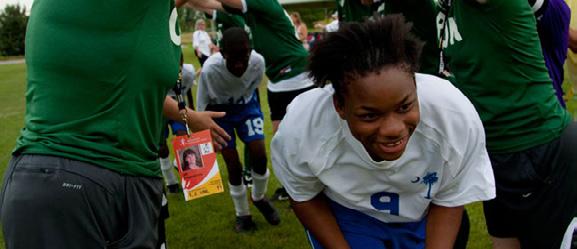
Respond. What can you do to be a teammate?
1. What are the benefits of being on a Unified Sports team?
2. When you participate in sports either during or after school, are there people who are left out? How could you include them?
3. Ask students to think about joining a Unified Sports team, or starting a new club or activity at their school to include others who are different than them. (For extra support have students visit the Event Planner or the Student Resources section on the Project UNIFY site.)
Get Involved!
Contact your local Special Olympics program about joining or starting a Unified Sports team in your community.
For more activities about encouragement:
l Visit the April newsletter.
l Review Lesson 3 for grades 3-5 “Inclusion Rules” in Get Into It Active.
l Watch the “Acceptance” section of Movies that Move.
l Watch this video about Young Athletes in Minnesota.
Video 4: Be the One
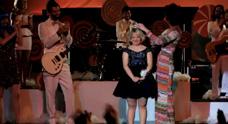
While Special Olympics continues to work for acceptance and understanding throughout the world, the most powerful leaders in this movement are our young people. Taking action within a school, setting an example for others, starting a new initiative, or standing up for a new friend these are the greatest resources we have in making a lasting impact. But someone has to take the first step.
Reflect. What does it mean to be the one?
Start the video and ask students to think about the difference that one person can make in the lives of others.
React. (Pause the video here).
1. Why do you think the girl first went over to the girl who was sitting by herself in the lunch room?
2. Why did this one simple act of friendship make such a difference?
3. Has anyone ever helped you feel part of a group? How?
Resume the video for reactions from other youth leaders.
Respond. What can you do to be the one?
1. Describe a time when one small action helped to set an example for the rest of your friends, your class, or your school. What happened?
2. Imagine that you could start a new trend of kindness in your school, and everyone would follow. What would you do and why?
3. Work with your class to identify one way that your school could be more accepting of all students. Brainstorm solutions that start with a simple act. Help students prepare to put their ideas into action.
Get Involved!
Go to the Project UNIFY Resources website and find an activity to bring to your school, like a Partner’s Club or Spread the Word to End the Word.
For more activities about taking action:
l Visit the May newsletter.
l Review Lesson 4 for grades 3-5 “Taking Action” in the Get Into It lessons.
l Watch the “Youth Leadership” section of Movies that Move.
l Watch the “Champions Together” featuring Special Olympics youth leaders.
GRADES 6-8

Background for Students
Special Olympics is a global movement of people who want to improve the lives of people with intellectual disabilities. They provide year-round sports training and athletic competition giving their athletes opportunities to develop physical fitness, demonstrate courage, and share their gifts with their communities.
ATHLETES SERVED
4,205,630
3,122,261 TRAINING & COMPETITION
1,083,369 TRAINING
This summer, the 2014 Olympics USA Games will be held in New Jersey where 3,500 athletes athletes will showcase their unique athletic abilities while competing in 16 different sports. They will be joined by 1,000 coaches, 10,000 volunteers and 50,000 spectators and families!
The videos in this collection are designed to help teachers and students learn more about the Games, initiate conversations about acceptance and inclusion, and encourage youth leaders to take action in their own schools and communities.
The videos encourage students and classrooms to make a connection with Special Olympics athletes in their area and support triumphs on and off the field as they complete locally and nationally.
Video 1: Be a Fan

Many people know what it means to be a fan cheering on a favorite sports team or even having a favorite movie star or a favorite band. We are fans of people who have all different talents sometimes talents that are similar to our own, and sometimes talents that are very different. We can even be a fan of people in our own lives encouraging their talents and supporting them as they try their best.
Reflect. What does it mean to be a fan?
Start the video and ask students to think about the thousands of fans who cheer on athletes who are doing their personal best.
React. (Pause the video here).
1. Think about the video and the actions of the man. How did the man impact the other racers?
2. Why is it important to be a fan of people’s different abilities?
3. When do people need encouragement the most? Why?
Resume the video for reactions from other youth leaders.
Respond. What can you do to be a fan?
1. Imagine if the students and teachers in your school only knew what you could not do, but didn’t know what you could do. How would you feel? How could having a “fan”, or someone to support you, change that?
2. Are there some students in your school who are more supported than others? Why is that?
3. Group students together and have them come up with a plan to encourage a group in your school or community that has less support because of their different abilities.
Get Involved!
Contact your local Special Olympics chapter to find events and competitions near you where you can support as a fan.
For more activities about diversity:
l Visit the February newsletter.
l Review Lesson 2 for Grades 6-8: “Changing Perceptions” in the Get Into It lessons.
l Watch the “Different Abilities” section of Movies that Move.
l Watch the Special Olympics PSA "Speechless".
Video 2: Be a Friend

In many schools, bullying is a big problem. Students who seem different are often teased and left out of activities. It takes courage not to be a part of the bullying; it takes even greater courage to stand up to the bullying and be a friend when someone needs one.
Reflect. What does it mean to be a friend?
Start the video and ask students to think about how being accepted and included (or excluded) can impact how someone feels or what they do.
React. (Pause the video here).
1. Consider the two parts of the video. Which one do you think would happen at your school? Why?
2. The basketball player took one specific action to be a friend to Red. Why was that action so effective? What else could he have done?
3. What prevents people from standing up to bullying?
Resume the video for reactions from other youth leaders, hit pause at “A Special Story”.
Respond. What can you do to be a friend?
1. Think about the video again. Imagine what happens next, either later that day or the next day at school. Write about it.
2. What would happen if people at your school stopped looking the other way when they saw bullying? What could you and your classmates do to make this happen?
Resume video to watch “A Special Story”
3. Watch Kenny’s story about the R-word. Have you heard others use that word? Why is the R-word hurtful and disrespectful? After hearing Kenny’s story, what would you say to a friend who used the word?
4. Have students visit r-word.org and consider signing the pledge or designing an awareness event at their school.
Get Involved!
Have lunch with someone who needs a friend this week.
For more activities about the power of words:
l Visit the March newsletter.
l Review Lesson 1 for grades 6-8 “Recognize and Address Intolerance” in the Get Into It lessons.
l Watch the “Power of Words” section of Movies that Move.
l Check out the “Stomp Out the R-Word” game on the Get Into It website.
Video 3: Be a Teammate

Special Olympics Unified Sports joins people with and without intellectual disabilities on the same team. Teammates train and compete together, building friendships and new understandings.
Reflect. What does it mean to be a teammate?
Start the video and ask students to think about experiences they’ve had being on a team.
React. (Pause the video here).
1. How is a Unified Sports team different than other teams? How is it the same?
2. What do you think the Special Olympics athletes gain from this experience? What do you think the Unified partners gain?
3. What do you think makes a Unified Sports team successful? How do teammates encourage one another?
Resume the video for reactions from other youth leaders.
Respond. What can you do to be a teammate?
1. What does acceptance look like on the playing field?
2. Are there opportunities in your school for people with and without disabilities to do things side-by-side? Describe.
3. Ask students to brainstorm an activity (e.g., a team, club, event) that would provide a new opportunity for students with and without disabilities to work side-byside to build new relationships and understandings. (For extra support have students visit the Event Planner or the Student Resources section on the Project UNIFY site.)
Get Involved!
Contact your local Special Olympics program about joining or starting a Unified Sports team in your community.
For more activities about encouragement:
l Visit the April newsletter.
l Review Lesson 3 for grades 6-8 “What Does My School Look Like?” in the Get Into It lessons.
l Watch the “Acceptance” section of Movies that Move.
l Meet other students on the “Wall of Faces” area of the Get Into It website.
Video 4: Be the One

While Special Olympics continues to work for acceptance and understanding throughout the world, the most powerful leaders in this movement are our young people. Taking action within a school, setting an example for others, starting a new initiative, or standing up for a new friend these are the greatest resources we have in making a lasting impact. But someone has to take the first step.
Reflect. What does it mean to be the one?
Start the video and ask students to think about the difference that one person can make.
React. (Pause the video here).
1. Why do you think the girl first went over to the girl who was sitting by herself in the lunch room? In the final scene, why did the basketball player approach the boy by himself?
2. Why does this one simple act of friendship make such a difference?
3. How realistic is this video? Would something like this ever happen in your school?
Resume the video for reactions from other youth leaders.
Respond. What can you do to be the one?
1. Describe a time when one small act created a chain reaction in your school. Was the result good or bad?
2. Are there times when students with disabilities are included, but it does not seem to be genuine friendship? Describe.
3. How can you take action today to “be the one”? Encourage students to take time to come up with something that is not just a nice action, but a genuine offer of friendship.
Get Involved!
Go to the Project UNIFY Resources website and find an activity to bring to your school, like the “It’s Our School, Too” play.
For more activities about taking action:
l Visit the May newsletter.
l Review Lesson 4 for grades 6-8 “How Can I Create Change?” in Get Into It Active.
l Watch the “Youth Leadership” section of Movies that Move.
l Watch the “Champions Together” featuring Special Olympics youth leaders.
GRADES 9-12

Background for Students
Special Olympics is a global movement of people who want to improve the lives of people with intellectual disabilities. They provide year-round sports training and athletic competition giving their athletes opportunities to develop physical fitness, demonstrate courage, and share their gifts with their communities.
ATHLETES SERVED
4,205,630
3,122,261 TRAINING & COMPETITION
1,083,369 TRAINING
This summer, the 2014 Olympics USA Games will be held in New Jersey where 3,500 athletes athletes will showcase their unique athletic abilities while competing in 16 different sports. They will be joined by 1,000 coaches, 10,000 volunteers and 70,000 spectators and families!
The videos in this collection are designed to help teachers and students learn more about the Games, initiate conversations about acceptance and inclusion, and encourage youth leaders to take action in their own schools and communities. The videos encourage students and classrooms to make a connection with Special Olympics athletes in their area and support triumphs on and off the field as they complete locally and nationally.
Video 1: Be a Fan

Many people know what it is like to be a fan cheering on a favorite sports team or even having a favorite movie star or a favorite band. We are fans of people who have all different talents sometimes talents that are similar to our own, and sometimes talents that are very different. We can even be a fan of people in our lives encouraging their talents and supporting them as they try their best.
Reflect. What does it mean to be a fan?
Start the video and ask students to think about the thousands of fans who cheer on athletes who are doing their personal best.
React. (Pause the video here.)
1. Think about the video and the man’s actions. Were they valuable or just a “nice gesture”? What were the results?
2. Why is it important to be a fan of people’s different abilities?
3. When do people need encouragement the most? Why?
Resume the video for reactions from other youth leaders.
Respond. What can you do to be a fan?
1. Identify a person who has achieved something great (can be in any area of interest). Conduct research to identify who supported and encouraged this person and how they impacted his/her success.
2. People with intellectual disabilities are often defined by what they cannot do. But for many Special Olympics athletes, fans on the sidelines offer encouragement. How does that impact the athletes? How might the experience impact the fans?
3. Are there some students in your school who are more supported than others? Why? Get together in small groups to brainstorm new ways to ensure all students feel supported and encouraged. How could this improve your school environment? (For more details on the importance of School Climate, go here.)
Get Involved!
Contact your local Special Olympics chapter to find events and competitions near you where you can support as a fan.
For more activities about diversity:
l Visit the February newsletter.
l Watch the “Different Abilities” section of Movies that Move.
l Watch the “Speechless” Special Olympics PSA .
l Meet other students on the “Wall of Faces” area of the Get Into It website.
Video 2: Be a Friend

In many schools, bullying is a big problem. Students who seem different are often teased and left out of activities. It takes courage not to be a part of the bullying; it takes even greater courage to stand up to the bullying and be a friend when someone needs one.
Reflect. What does it mean to be a friend?
Start the video and ask students to think about how being accepted and included (or excluded) can impact how someone feels or what they do.
React. (Pause the video here.)
1. The basketball player took one specific action to be a friend to Red. What else could he have done?
2. What are the different types of bullying you’ve seen or experienced? (e.g., verbal, physical, exclusion, cyberbullying) How do they compare?
3. What prevents people from standing up to bullying?
Resume the video for reactions from other youth leaders, hit pause at “A Special Story”.
Respond. What can you do to be a friend?
1. Think about the video again. Imagine what happens next, either later that day or the next day at school. Write about it.
2. What would happen if people at your school stopped looking the other way when they saw bullying? What could you and your classmates do to make this happen?
Resume video to watch “A Special Story”
3. Watch Kenny’s story about the R-word. Have you heard others use that word? Why is the R-word hurtful and disrespectful? After hearing Kenny’s story, what would you say to a friend who used the word?
4. Visit r-word.org and consider signing the pledge or desiging an awareness event at your school.
Get Involved!
Find someone who needs a friend and invite them to lunch this week.
For more activities about the power of words:
l Visit the March newsletter.
l Review Lesson 1 for grades 9-12 “Recognize and Address Intolerance” in the Get Into It lessons.
l Watch the “Power of Words” section of Movies that Move.
l Test out your skills with “The Right Words to Spread” scramble game on the Get Into It website.
Video 3: Be a Teammate

Special Olympics Unified Sports joins people with and without intellectual disabilities on the same team. Teammates train and compete together, building friendships and new understandings.
Reflect. What does it mean to be a teammate?
Start the video and ask students to think about experiences they’ve had being on a team.
React. (Pause the video here.)
1. How is a Unified Sports team different from other teams? How is it the same?
2. Why is Unified Sports such an important component of Special Olympics?
3. What needs to be in place in order to make a Unified Sports team a success?
Resume the video for reactions from other youth leaders.
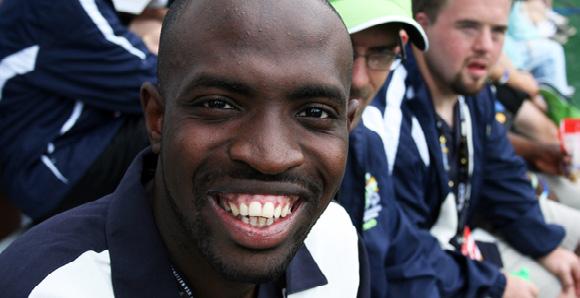
Respond. What can you do to be a teammate?
1. Break into teams and research the development of Unified Sports. How has it changed and why?
2. What does acceptance look like on the playing field? How is it different from acceptance in the hallways, in the classroom, or in the community? How is it the same?
3. Brainstorm an activity (e.g., a team, club, event) that would provide a new opportunity for students with and without disabilities to work side-by-side to build new relationships and understandings. (For extra support visit the Event Planner or the Student Resources section on the Project UNIFY site.)
Get Involved!
Contact your local Special Olympics program about joining or starting a Unified Sports team in your community.
For more activities about encouragement:
l Visit the April newsletter.
l Review Lesson 3 for grades 9-12 “What Does My Community Look Like” in Get Into It Active.
l Watch the “Acceptance” section of Movies that Move.
l Check out the free Unified Sports coaching course online.
Video 4: Be the One

While Special Olympics continues to work for acceptance and understanding throughout the world, the most powerful leaders in this movement are our young people. Taking action within a school, setting an example for others, starting a new initiative, or standing up for a new friend these are the greatest resources we have in making a lasting impact. But someone has to take the first step.
Reflect. What does it mean to be the one?
Start the video and ask students to think about the difference that one person can make.
React. (Pause the video here.)
1. Why do you think the girl first went over to the girl who was sitting by herself in the lunch room? In the final scene, why did the basketball player approach the boy by himself?
2. Why does this one simple act of friendship make such a difference?
3. How realistic is this video? Do you think it demonstrates genuine friendship? Why or why not?
Resume the video for reactions from other youth leaders.
Respond. What can you do to be the one?
1. What is the difference between real inclusion and tokenism? Examples:
l Athletes with and without disabilities competing side-by-side demonstrates real inclusion. Including an athlete with a disability as a team mascot just to appear accepting demonstrates tokenism.
l Providing an opportunity for an individual with a disability to speak about the importance of respect at an assembly demonstrates real inclusion. Having someone with a disability stand on stage and smile, but never have a meaningful role in the discussion is tokenism.
2. Research various examples in the past decade of individuals with intellectual disabilities becoming prom king/queen, scoring a touchdown, or other noteworthy achievements in high school. Split into groups and conduct investigations about the details of each event. Decide if each event was tokenism or real inclusion and describe the common characteristics of each type.
3. Based on this information, how could you “be the one” for your school? What would you change? How would your actions affect the overall school climate?
Get Involved!
Go to the Project UNIFY Resources website and find an activity to bring to your school, like a rally for respect.
For more activities about taking action:
l Visit the May newsletter.
l Review Lesson 4 for grades 9-12 “How Can I Create Change?” in the Get Into It lessons.
l Watch the “Youth Leadership” section of Movies that Move.
l Watch the “Champions Together” featuring Special Olympics youth leaders.
COMMON CORE STANDARDS
Through student reflection and guided discussions, the following Common Core Standards will be addressed within each grade level.
Grades 3-5 Common Core Standards:
CCSS.ELA-Literacy.SL.3.1 Engage effectively in a range of collaborative discussions (one-on-one, in groups, and teacher-led) with diverse partners, building on others’ ideas and expressing their own clearly
CCSS.ELA-Literacy.SL.4.1 Engage effectively in a range of collaborative discussions (one-on-one, in groups, and teacher-led) with diverse partners, building on others’ ideas and expressing their own clearly
CCSS.ELA-Literacy.SL.4.2 Paraphrase portions of a text read aloud or information presented in diverse media and formats
CCSS.ELA-Literacy.SL.5.1 Engage effectively in a range of collaborative discussions (one-on-one, in groups, and teacher-led) with diverse partners, building on others’ ideas and expressing their own clearly
CCSS.ELA-Literacy.SL.5.2 Summarize a written text read aloud or information presented in diverse media and formats, including visually, quantitatively, and orally.
Grades 6-8 Common Core Standards:
CCSS.ELA-Literacy.RI.6.7 Integrate information presented in different media or formats (e.g., visually, quantitatively) as well as in words to develop a coherent understanding of a topic or issue.
CCSS.ELA-Literacy.SL.6.1 Engage effectively in a range of collaborative discussions (one-on-one, in groups, and teacher-led) with diverse partners building on others’ ideas and expressing their own clearly
CCSS.ELA-Literacy.SL.6.2 Interpret information presented in diverse media and formats (e.g. visually, quantitatively, orally) and explain how it contributes to a topic, text, or issue under study.
CCSS.ELA-Literacy.SL.7.1 Engage effectively in a range of collaborative discussions (one-on-one, in groups, and teacher-led) with diverse partners building on others’ ideas and expressing their own clearly
CCSS.ELA-Literacy.SL.7.2 Analyze the main ideas and supporting details presented in diverse media and formats (e.g., visually, quantitatively, orally) and explain how the ideas clarify a topic, text, or issue under study.
CCSS.ELA-Literacy.RI.8.7 Evaluate the advantages and disadvantages of using different mediums (e.g., print or digital text, video, multimedia) to present a particular topic or idea.
CCSS.ELA-Literacy.SL.8.1 Engage effectively in a range of collaborative discussions (one-on-one, in groups, and teacher-led) with diverse partners building on others’ ideas and expressing their own clearly
CCSS.ELA-Literacy.SL.8.2 Analyze the purpose of information presented in diverse media and formats (e.g., visually, quantitatively, orally) and evaluate the motives (e.g., social, commercial, political) behind its presentation
CCSS.ELA-Literacy.W.8.3 Write narratives to develop real or imagined experiences or events using effective technique, relevant descriptive details, and well-structured event sequences.
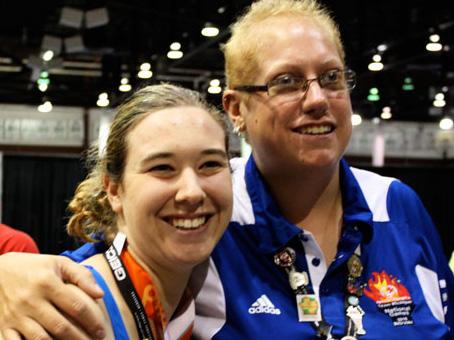
Grades 9-12 Common Core Standards:
CCSS.ELA-Literacy.SL.9-10.1 Engage effectively in a range of collaborative discussions (one-on-one, in groups, and teacher-led) with diverse partners building on others’ ideas and expressing their own clearly
CCSS.ELA-Literacy.SL.9-10.2 Integrate multiple sources of information presented in diverse media or formats (e.g., visually, quantitatively, orally) evaluating the credibility and accuracy of each source.
CCSS.ELA-Literacy.WHST.9-10.7 Conduct short as well as more sustained research projects to answer a question (including a self-generated question) or solve a problem
CCSS.ELA-Literacy.RI.11-12.7 Integrate and evaluate multiple sources of information presented in different media or formats (e.g., visually, quantitatively) as well as in words in order to assess a question or solve a problem
CCSS.ELA-Literacy.SL.11-12.1 Initiate and participate effectively in a range of collaborative discussions (oneon-one, in groups, and teacher-led) with diverse partners building on others’ ideas and expressing their own clearly
CCSS.ELA-Literacy.SL.11-12.4 Present information, findings, and supporting evidence, conveying a clear and distinct perspective, such that listeners can follow the line of reasoning, althernative or opposing perspectives are addressed, and the organization, development, substance, and style are appropriate to purpose, audience, and a range of formal and informal tasks.
CCSS.ELA-Literacy.WHST.11-12.7 Conduct short as well as more sustained research projects to answer a question (including a self-generated question) or solve a problem
For more information about the School Enrichment Program, please contact: Rebecca Ralston at rralston@specialolympics.org
Special Olympics: www.specialolympics.org, Facebook.com/SpecialOlympics, Twitter @SpecialOlympics
Learn More About the 2014 USA Games and Special Olympics: 2014 USA Games: www.2014specialolympics.org, Facebook.com/ SpecialOlympicsUSAGames, Twitter @2014USAGames
Special Olympics Project UNIFY: www.specialolympics.org/project_unify Facebook.com/ProjectUNIFY Twitter @SOProjectUNIFY
